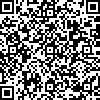- Home
- PTSD: information for patients
- Hamilton Anxiety Rating Scale (HAM-A)

15 November 2022
Hamilton Anxiety Rating Scale (HAM-A)
- DisclamerThis questionnaire (scale) is a screening tool only and is not intended for self-diagnosis or self-treatment. Only a doctor can correctly interpret the test results and make a diagnosis.
The Hamilton Anxiety Rating Scale (HAM-A) quantifies the severity of anxiety. The Hamilton Anxiety Scale is often used to evaluate the effectiveness of anti-anxiety medications. The Hamilton Anxiety Scale consists of 14 indicators, each of which is determined by a number of symptoms. Each indicator is rated on a 5-point scale from 0 (none) to 4 (severe).
- Hamilton Anxiety Rating Scale (HAM-A)
- 1. Anxious mood (Anxiety, expectation of the worst, anxious fears, irritability)
- 0
- 1
- 2
- 3
- 4
- 2. Tension (Feeling tense, shaking, easily tearful, anxious, trembling)
- 0
- 1
- 2
- 3
- 4
- 3. Fears (Fear of the dark, strangers, loneliness, animals, crowds, or transportation)
- 0
- 1
- 2
- 3
- 4
- 4. Sleep disturbances (Difficulty falling asleep, intermittent sleep, nightmares, feeling tired and weak upon waking)
- 0
- 1
- 2
- 3
- 4
- 5. Intellectual disabilities (difficulty concentrating, memory loss)
- 0
- 1
- 2
- 3
- 4
- 6. Depressive mood (Loss of usual interests and feelings of satisfaction from hobbies, depression, anhedonia, mood swings)
- 0
- 1
- 2
- 3
- 4
- 7. Somatic complaints (muscular) (pain, twitching, tension, clonic cramps, teeth grinding, voice breaking, increased muscle tone)
- 0
- 1
- 2
- 3
- 4
- 8. Somatic complaints (sensitive, sensory) (ringing in the ears, blurred vision, hot and cold flashes, feeling of weakness, tingling)
- 0
- 1
- 2
- 3
- 4
- 9. Cardiovascular symptoms (tachycardia, palpitations, chest pain, pulsation in the vessels, frequent sighs)
- 0
- 1
- 2
- 3
- 4
- 10. Respiratory symptoms (Feeling of pressure in the chest, feeling of suffocation, shortness of breath)
- 0
- 1
- 2
- 3
- 4
- 11. Gastrointestinal symptoms (Dysphagia, nausea or vomiting, constipation, weight loss, feeling of stomach fullness, diarrhea or constipation)
- 0
- 1
- 2
- 3
- 4
- 12. Genitourinary symptoms (increased urination or urge to urinate, dysmenorrhea, impotence)
- 0
- 1
- 2
- 3
- 4
- 13. Vegetative symptoms (Dry mouth, redness or pallor of the skin, sweating, headache with a feeling of tension)
- 0
- 1
- 2
- 3
- 4
- 14. Behavior during the conversation (Fidgeting in the chair, restless gestures and gait, trembling, frowning, tense facial expression, sighing or rapid breathing, frequent swallowing of saliva)
- 0
- 1
- 2
- 3
- 4
Your result: 0Mild anxiety
DisclamerThe test results are not a diagnosis. For a diagnosis, please consult your doctor and show him/her the test results. - 1. Anxious mood (Anxiety, expectation of the worst, anxious fears, irritability)
